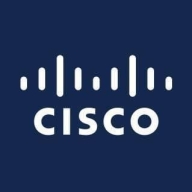

Cisco Secure Endpoint and Microsoft Defender for Endpoint compete in endpoint security. Cisco Secure Endpoint has an upper hand in cost-effectiveness and threat intelligence, while Microsoft Defender leads in integration with Microsoft 365 tools.
Features: Cisco Secure Endpoint offers strong malware detection, comprehensive threat intelligence, and robust security coverage. Microsoft Defender for Endpoint provides seamless integration with Microsoft 365, advanced threat hunting capabilities, and extensive feature set.
Room for Improvement: Cisco Secure Endpoint could enhance its reporting features, reduce false positives, and improve some usability aspects. Microsoft Defender for Endpoint users desire better detailed threat explanations, improved interoperability with non-Microsoft applications, and more intuitive interfaces.
Ease of Deployment and Customer Service: Cisco Secure Endpoint has straightforward deployment but mixed customer support experiences. Microsoft Defender for Endpoint is noted for smooth setup within Microsoft environments and reliable customer support.
Pricing and ROI: Cisco Secure Endpoint is seen as cost-effective with quicker ROI but can be considered pricey by some. Microsoft Defender for Endpoint offers good value for its features and integration but at a higher cost.
Without detection and protection measures, organizations would face substantial payments and reputational damage, including the necessity to inform customers about data breaches, potentially leading to loss of business.
We have seen a return on investment when using Microsoft Defender for Endpoint, as it saves labor by reducing the need for staff to focus on it.
The biggest return on investment for me when using Microsoft Defender for Endpoint is the time saving.
Cisco has good technical support, especially considering these are newer solutions compared to traditional routing and switching products.
The level-one support seems disconnected from subject matter experts.
I rate Microsoft support 10 out of 10.
Due to our size, we don't have access to direct technical support, but the knowledge base, Microsoft Learn, and the articles available are really good.
Cisco Secure Endpoint is definitely scalable.
We managed to scale it out in a short amount of time, with two months of planning and three months of implementation on 10,000 computers.
Microsoft Defender for Endpoint is scalable enough to handle various devices across environments, whether they are laptops, Android devices, or operating in hybrid environments.
Compatibility is its main feature.
We have not encountered any problems.
I haven't seen any outages with Microsoft.
I rate Defender 10 out of 10 for stability.
Defender for Endpoint is extremely stable.
The forensic capabilities need enhancement, especially for deep forensic data collection.
Repeated interactions are necessary due to Level One's lack of tools and knowledge, hindering efficient problem-solving and negatively impacting our experience with Microsoft support.
In contrast, competing products offer reduced pricing for long-term commitments, which makes it difficult for us in that environment.
We use Microsoft partners to help govern the platform, and as part of an alliance, we want to gather data from each tenant and combine them for a complete view.
Cisco is aggressive in pricing, making it competitive and sometimes even cheaper than other good products like CrowdStrike, Microsoft Defender, or SentinelOne.
Given our extensive Microsoft licensing, transitioning to Defender for Endpoint did not affect licensing costs.
It costs $15 per VM for the P2 plan, which is seen as affordable for customers.
The pricing, setup, and licensing were very easy and simple.
Cisco Secure Endpoint is very good in machine learning, which allows it to secure offline contents even if not connected to the internet.
Defender for Endpoint's coverage across different platforms in our environment is pretty good. We have devices running Linux, Mac OS, Windows, iOS, and Android. It covers all of them.
Microsoft Defender for Endpoint provides a unified management interface allowing customers to manage their on-premises and hybrid infrastructures from a single pane.
One of the best features of Microsoft Defender for Endpoint is its database for identifying zero-day attacks or malware attacks.
| Product | Market Share (%) |
|---|---|
| Microsoft Defender for Endpoint | 9.5% |
| Cisco Secure Endpoint | 1.4% |
| Other | 89.1% |


| Company Size | Count |
|---|---|
| Small Business | 21 |
| Midsize Enterprise | 14 |
| Large Enterprise | 21 |
| Company Size | Count |
|---|---|
| Small Business | 79 |
| Midsize Enterprise | 34 |
| Large Enterprise | 87 |
Cisco Secure Endpoint is a comprehensive endpoint security solution that natively includes open and extensible extended detection and response (XDR) and advanced endpoint detection and response (EDR) capabilities. Secure Endpoint offers relentless breach protection that enables you to be confident, be bold, and be fearless with one of the industry’s most trusted endpoint security solutions. It protects your hybrid workforce, helps you stay resilient, and secures what’s next with simple, comprehensive endpoint security powered by unique insights from 300,000 security customers and deep visibility from the networking leader.
Cisco Secure Endpoint was formerly known as Cisco AMP for Endpoints.
Reviews from Real Users
Cisco Secure Endpoint stands out among its competitors for a number of reasons. Two major ones are its ability to enable developers to easily secure their endpoints with one single operation using its management console and its advanced alerting techniques.
Tim C., an IT manager at Van Der Meer Consulting, writes, "The solution makes it possible to see a threat once and block it everywhere across all endpoints and the entire security platform. It has the ability to block right down to the file and application level across all devices based on policies, such as, blacklisting and whitelisting of software and applications. This is good. Its strength is the ability to identify threats very quickly, then lock them and the network down and block the threats across the organization and all devices, which is what you want. You don't want to be spending time working out how to block something. You want to block something very quickly, letting that flow through to all the devices and avoiding the same scenario on different operating systems."
Wouter H., a technical team lead network & security at Missing Piece BV, notes, "Any alert that we get is an actionable alert. Immediately, there is information that we can just click through, see the point in time, what happened, what caused it, and what automatic actions were taken. We can then choose to take any manual actions, if we want, or start our investigation. We're no longer looking at digging into information or wading through hundreds of incidents. There's a list which says where the status is assigned, e.g., under investigation or investigation finished. That is all in the console. It has taken away a lot of the administration, which we would normally be doing, and integrated it into the console for us."
Microsoft Defender for Endpoint is a comprehensive security solution that provides advanced threat protection for organizations. It offers real-time protection against various types of cyber threats, including malware, viruses, ransomware, and phishing attacks.
With its powerful machine-learning capabilities, it can detect and block sophisticated attacks before they can cause any harm. The solution also includes endpoint detection and response (EDR) capabilities, allowing organizations to quickly investigate and respond to security incidents. It provides detailed insights into the attack timeline, enabling security teams to understand the scope and impact of an incident.
Microsoft Defender for Endpoint also offers proactive threat hunting, allowing organizations to proactively search for and identify potential threats within their network. It integrates seamlessly with other Microsoft security solutions, such as Microsoft Defender XDR, to provide a unified and holistic security approach. With its centralized management console, organizations can easily deploy, configure, and monitor the security solution across their entire network.
Microsoft Defender for Endpoint is a robust and scalable security solution that helps organizations protect their endpoints and data from evolving cyber threats.
We monitor all Endpoint Protection Platform (EPP) reviews to prevent fraudulent reviews and keep review quality high. We do not post reviews by company employees or direct competitors. We validate each review for authenticity via cross-reference with LinkedIn, and personal follow-up with the reviewer when necessary.